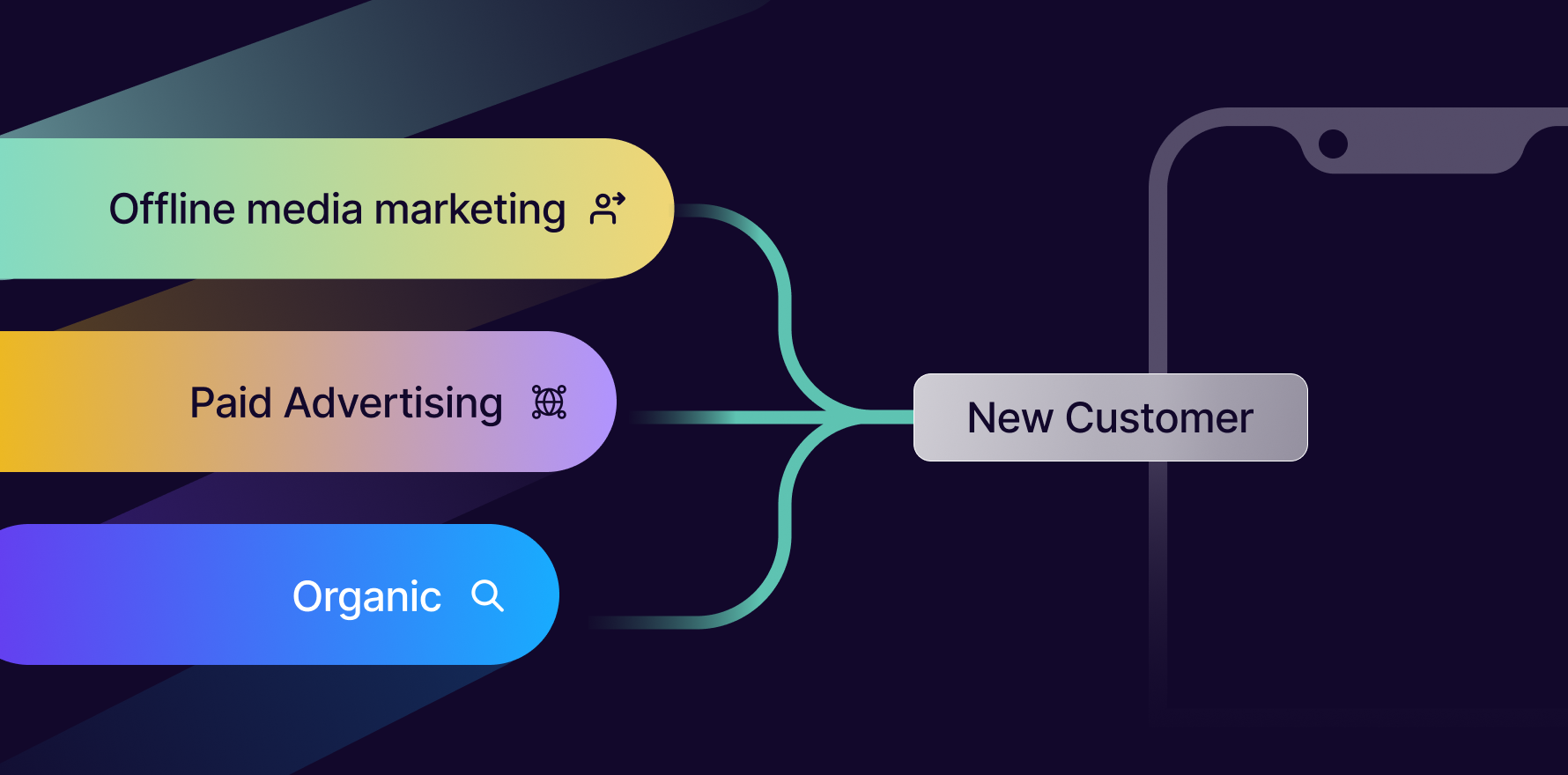As a mobile app marketer, you’ve likely asked yourself, “How can I grow my user base?” With billions of dollars poured into paid advertising and user acquisition, the stakes have never been higher. Acquiring new users isn’t just about throwing money at the usual suspects like Google, Facebook, and TikTok; it’s about making sure each dollar spent delivers real, measurable returns.
The reality is that today’s mobile app acquisition landscape is more competitive and complex than ever. New channels are emerging, user behavior is shifting, and privacy changes make it harder to track performance accurately. But here’s the million-dollar question: how do you know if your acquisition strategy is actually working?
Is your reliance on traditional attribution models holding you back? Could you be overspending on channels that aren’t driving incremental growth? The answers lie in how you measure and optimize your marketing efforts, using a mix of marketing mix modeling (MMM), incrementality testing, and causal attribution.
In this blog, we’ll explore how mobile apps can invest better in acquisition channels by shifting from short-term, surface-level metrics to a long-term, data-driven approach that unlocks real growth potential. Ready to find out how? Let’s dive in.
The Current Landscape of Mobile App Acquisition
Mobile app acquisition has never been more challenging or crucial. The sheer volume of mobile apps fighting for users’ attention means fierce competition and rising acquisition costs. Gone are the days when bidding more on Facebook or Google could guarantee a steady stream of users. Mobile marketers must balance multiple channels, strategies, and budgets to stay ahead.
Key Channels for Acquisition:
Acquisition efforts typically fall into three main categories:
- Organic: SEO, app store optimization (ASO), word-of-mouth, and social media are key players here. They come at no direct cost, but building traction in these areas requires much effort and smart positioning to stand out.
- Offline Media Marketing: Billboards, TV ads, and radio are traditional forms of advertising that still have their place. However, mobile apps can be difficult to track, making it hard to understand their true impact on user acquisition.
- Online Paid Acquisition: This is where most mobile app marketers invest heavily in running ads across channels like Facebook, Google, TikTok, and YouTube. These platforms offer massive reach but also come with rising costs and diminishing returns.
Most mobile app acquisition strategies rely on the latter, with budgets in the millions dedicated to driving installs and user engagement. But here’s the catch: knowing where and how to invest isn’t as straightforward as it seems.
Why Traditional Attribution Falls Short?
While traditional attribution models can show you which ads drove app installs, they fail to reveal the bigger picture: Are these channels driving incremental value, or are you just paying for users who would have downloaded your app anyway?
The complexity is compounded by the limitations of current attribution models and evolving user privacy regulations, such as Apple’s App Tracking Transparency (ATT) on iOS. With users increasingly opting out of tracking, visibility into which channels truly drive growth is becoming more challenging to achieve.
Simply relying on last-click attribution models or overspending on familiar channels is no longer enough in this landscape. Mobile app marketers need to dig deeper, using data-driven approaches to understand which channels deliver real, incremental growth and which are wasting valuable budgets.
It’s time to rethink your acquisition strategy, starting with better measurement and smarter investment.
How Can Mobile Apps Invest Better at Acquisition Channels?
Investing in the right acquisition channels is a multi-million-dollar question for most mobile app marketers. With countless options available, ranging from Google Ads and Facebook to TikTok and even offline media, the challenge lies in knowing where to place your bets and how much to invest. But here’s the hard truth: not every channel is created equal, and the real value lies in knowing which channels deliver incremental growth and which are simply burning through your budget.
The answer lies in building an MMM for optimizing existing channels, setting up incrementality tests for discovering new, untapped channels, and leveraging causal attribution for campaign optimizations.
Let’s look at this measurement framework in more detail.
1. Build an MMM to optimize your budget on current acquisition channels
Marketing Mix Modeling (MMM) is a powerful tool that uses historical data to analyze the impact of your marketing spend across multiple channels. Instead of relying on simplistic attribution models, MMM allows you to see the full picture: how each online or offline channel contributes to overall performance.
Why do you need marketing mix models (MMM)?
MMM helps mobile app marketers make smarter decisions by revealing which channels are driving the most significant returns on investment and where the law of diminishing returns kicks in. With MMM, you can:
Identify incremental and underperforming channels: Find out which marketing channels (like social media, email, or ads) are performing well and which ones aren’t.
Let’s say you’re running campaigns across Facebook, Google, and TikTok. Using MMM, you discover that while TikTok has a lower cost per install (CPI), Facebook drives higher lifetime value (LTV) customers. With this insight, you can optimize your budget across these channels to maximize both installs and revenue.
Understand saturation of high-performing channels: Allocate more budget to the channels where you see the best returns.
For example, you may be investing heavily in Facebook ads. Still, MMM can help you determine if increasing that spend will lead to real growth—or if you’ve hit a point where further investment is no longer adding incremental value.
Understand cross-channel interactions: Find out how different channels work together to drive results, ensuring you’re not just focusing on one at the expense of others.
How to build an MMM?
Step 1: Collect & prepare data
The first step in building an MMM is gathering all the relevant data. This includes data from your marketing channels, customer behaviors, sales figures, and external factors such as seasonality or economic indicators. Once collected, the data must be cleaned and transformed to ensure consistency and accuracy across all sources.
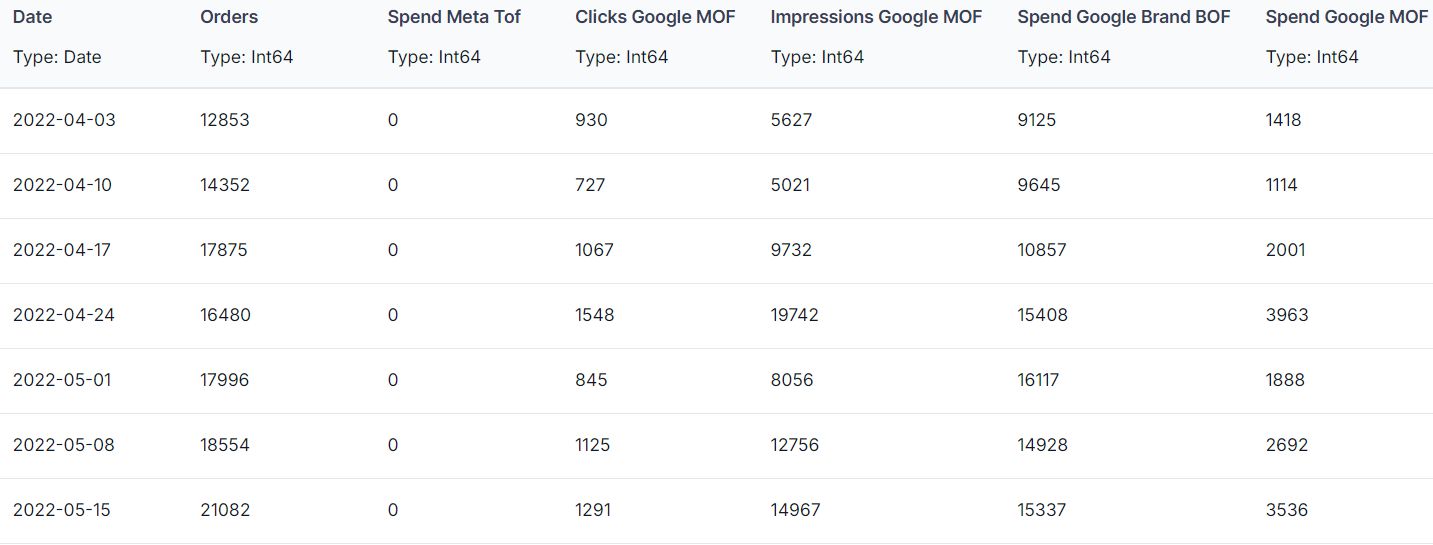
Step 2: Model & analyze
Once the data is prepared, it’s time to run the model. This stage uses advanced statistical techniques to analyze the relationship between marketing spend and business outcomes (such as sales or conversions). The output will help you predict how future investments in different channels will impact your bottom line.
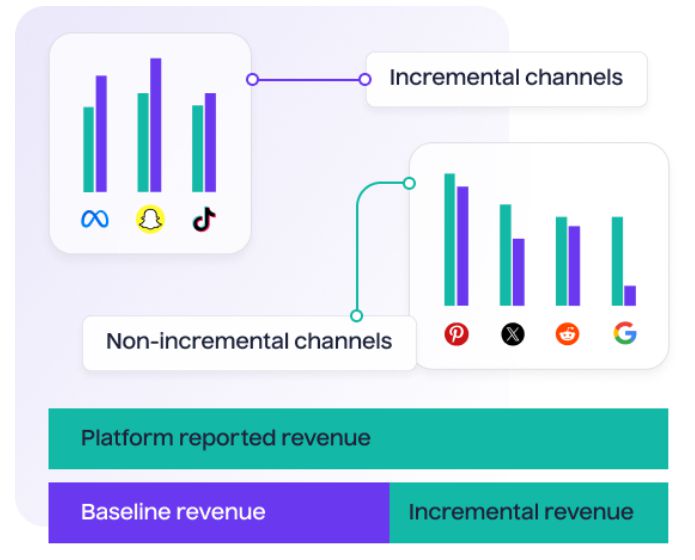
Step 3: Validate & Refresh
The final step in building your MMM is validation. Use holdout testing data to ensure that the model is accurate. Over time, the model’s performance may drift, so it’s important to periodically refresh it by incorporating new data and rerunning the analysis.
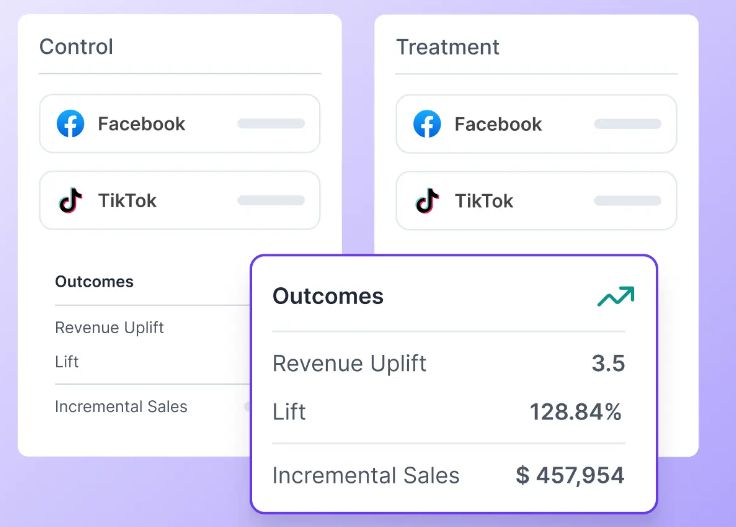
Regularly updating and validating your MMM will allow you to make more informed, data-driven decisions, ensuring your marketing spend delivers maximum value.
If you haven’t already started with MMM, here’s our guide that will help you choose between customized in-house MMM solutions and scalable SaaS platforms.
2. Set up Incrementality tests to identify new acquisition channels
Unlike traditional attribution models, which only describe what happened, incrementality testing measures the true impact of each channel.
As mobile app marketers, we often fall into the trap of sticking with tried-and-true channels like Facebook or Google, even if their performance declines. Incrementality testing gives you the confidence to explore new acquisition channels without fearing wasting your budget. By isolating the effect of a new channel, you can assess whether it’s bringing in new net users or recycling the same audience.
How does it work?
You need to set up step-wise scale-up geo tests. Scaling up involves increasing your marketing spend in the test markets while keeping the budget unchanged in the control markets. By doing this, you can accurately measure the direct impact of new channels without risking large-scale budget misallocation.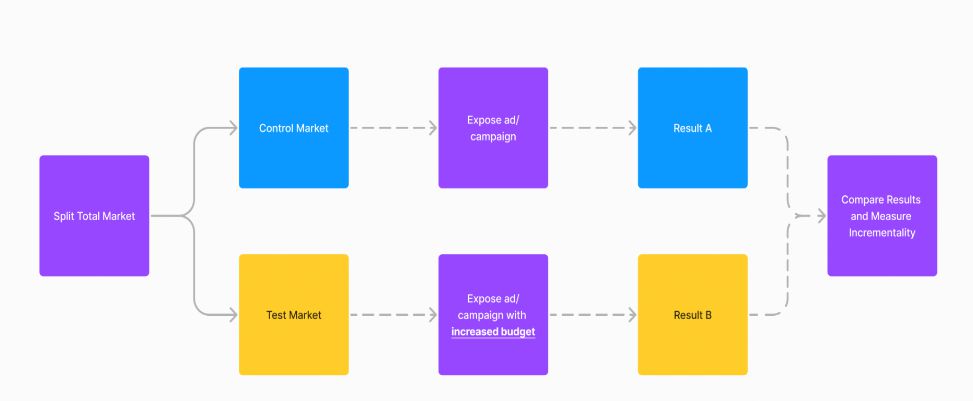
Since these are new channels in your mix, there’s no prior performance to compare against, eliminating the need for holdout tests in this case. By scaling up and analyzing the results, you can determine whether these channels add incremental value to your marketing efforts.
Pro Tip: Calibrate your MMM with Incrementality Insights
In general, running geo-experiments helps to improve your MMM by creating spend variation. However, you can also use the results of your experiments to up-weight or down-weight each channel in your model. Since your incrementality reads reflect the true business impact, use the data to anchor your marketing mix model.
Here are some other key use cases of incrementality testing for mobile apps:
| App Category | Use Case | Question to Test | Metric Measured |
|---|---|---|---|
| Shopping apps | Seasonality Testing | Does increasing spend during Black Friday drive more installs? | Installs, Organic Traffic |
| Dating apps | Seasonality Testing | Is it worthwhile to increase marketing spend around New Year’s Eve? | Installs |
| Lifestyle apps | Channel Performance | Will advertising on TikTok impact event registrations? | Event Registration |
| Gaming apps | Operating System Comparison | Does advertising on iOS or Android drive more conversions? | Level-up, Installs |
| Finance apps | Ad Fatigue | Has this campaign reached ad fatigue? | Installs, Loan Approvals |
| Food delivery apps | New Territories | Which new region generates the most valuable installs? | Installs, Lifetime Value (LTV) |
| Video streaming apps | Testing growth channels | Can this new, smaller, ad partner who offered us a lower CPI as an incentive be a source for new installs? | Installs |
| Travel apps | Testing growth channels | If we try a new campaign on Google Search sharing a discount code would that bring us more first-time bookings? | Event: First booking |
3. Leverage causal attribution for daily campaign optimizations
MMP or in-platform reports and insights are not grounded in incrementality and are derived using correlation, not causation.
Causal attribution enhances this by adjusting your platform data using insights from experiments or MMM. This allows you to optimize your campaigns using granular incrementality insights to drive incremental results.
Measurement experts from Google recommend the same in their modern measurement playbook
- Start by pulling an attribution report from your platform. This report provides information on the returns of various campaigns on ad spending (ROAS).
- Next, calculate the incrementality factor by comparing the ROAS from the same timeframe and level of aggregation between your attribution and MMM / Experiments reports.
- Finally, the incrementality factor is applied to the initial attribution report to get the estimated ROAS post-reweighting.
The Future of Mobile App Acquisition Strategy
Investing better in acquisition channels isn’t just about winning the short game. It’s about building a sustainable growth strategy that delivers long-term results. To do this, you need to look beyond immediate KPIs like installs or ROAS and consider the overall customer lifetime value (CLTV) each channel contributes.
By using MMM and incrementality testing in tandem, mobile apps can:
- Avoid over-investing in saturated channels: Once you know where diminishing returns set in, you can reallocate your budget to areas that drive true growth.
- Confidently scale new channels: Incrementality testing ensures that you’re driving net new value when you invest in a new channel.
- Create a holistic acquisition strategy: Balance investments across organic, paid, and offline channels to build a more resilient marketing strategy.
Finally, the future of mobile app acquisition will involve more reliance on causal attribution. While traditional attribution models have their place, they fall short when understanding each channel’s true impact on long-term growth. Causal attribution, on the other hand, helps marketers understand not just what happened but why it happened.
Marketers can get a clearer picture of what’s driving growth by using causal-based measurement techniques like incrementality testing and MMM. Instead of relying on guesswork, you’ll have hard data that shows exactly which campaigns, touchpoints, or channels are delivering the most value. This allows for better decision-making, more efficient spend allocation, and, ultimately, greater return on investment.
Are you ready to future-proof your acquisition strategy and unlock the full potential of your marketing investments? Now’s the time to act.
You may also like
Nothing Found
Essential resources for your success
